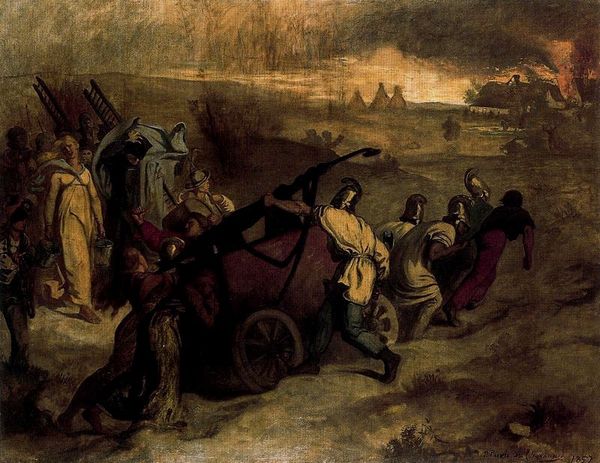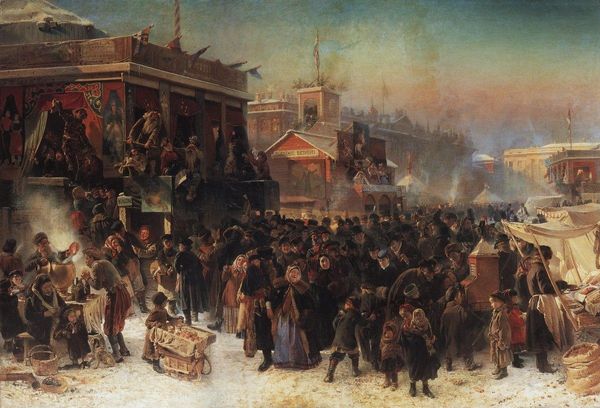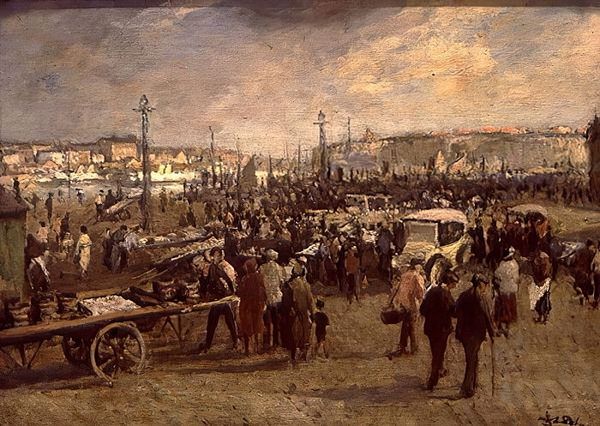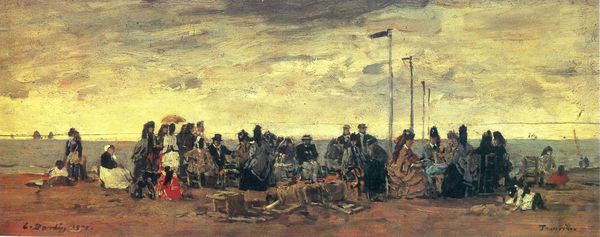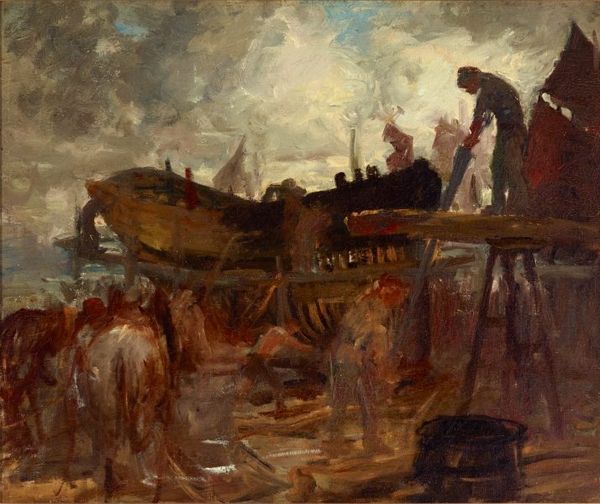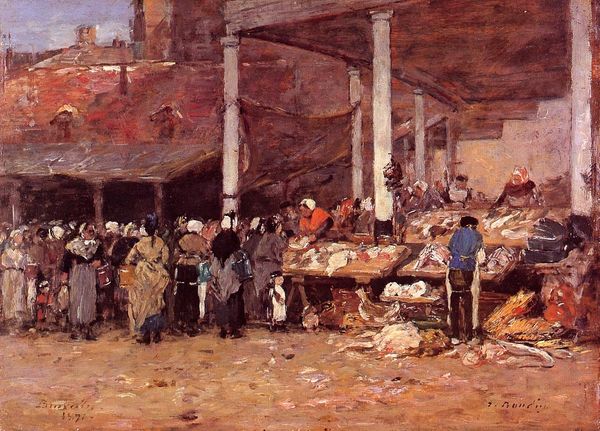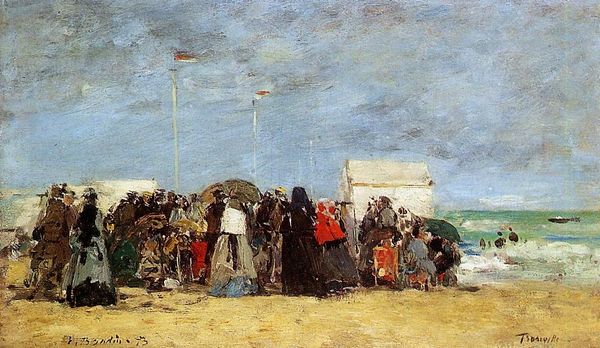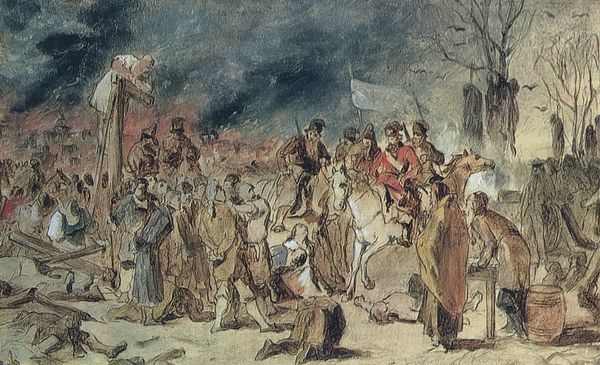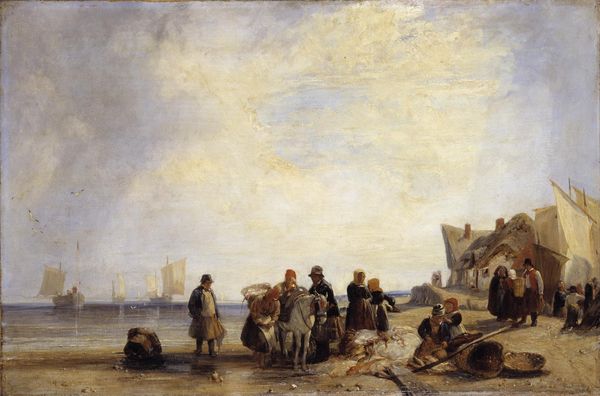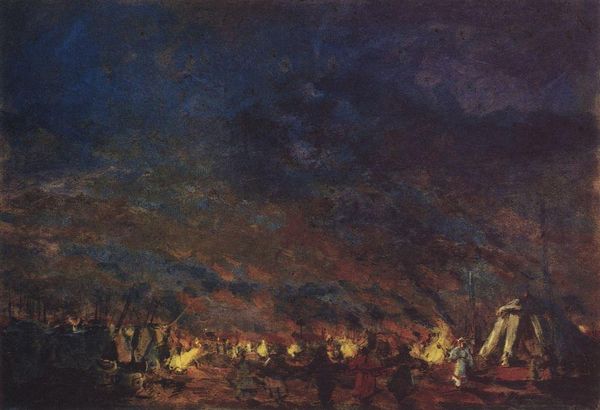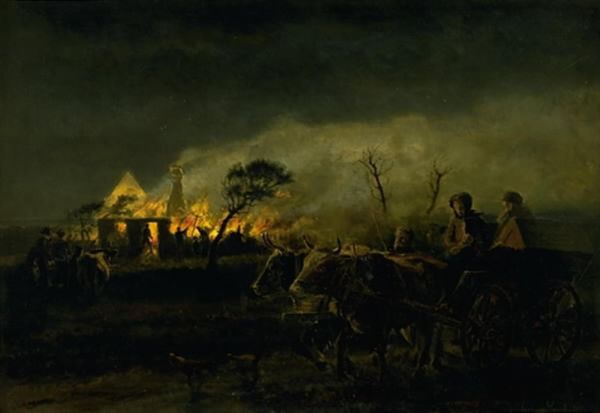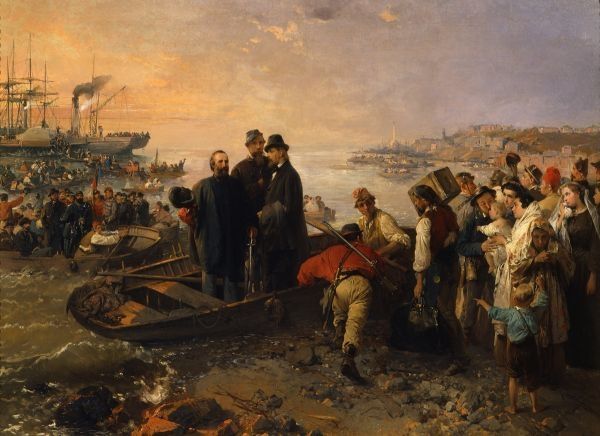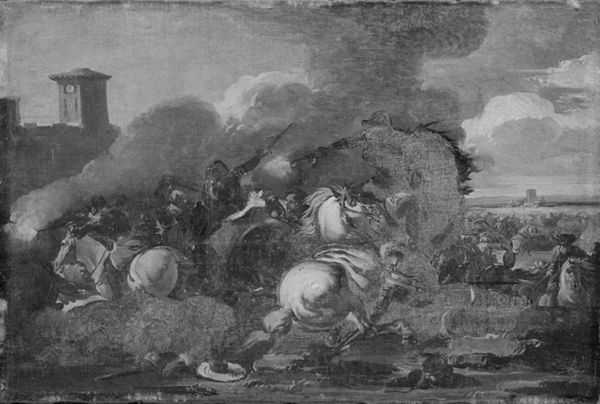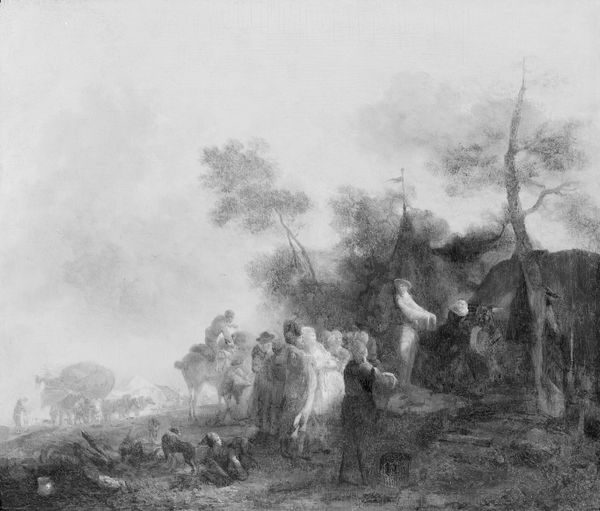
The Maple Sugar Camp. Turning Off 1873
0:00
0:00
eastmanjohnson
Thyssen-Bornemisza Museum, Madrid, Spain
painting, oil-paint
#
painting
#
oil-paint
#
landscape
#
oil painting
#
hudson-river-school
#
genre-painting
#
realism
Copyright: Public domain
Curator: Eastman Johnson's 1873 oil painting, "The Maple Sugar Camp. Turning Off", is currently housed here at the Thyssen-Bornemisza Museum in Madrid. It is quite striking, wouldn’t you agree? Editor: Yes, my first impression is of intense labor amidst this hushed, snowy woodland scene. Look at the dark concentration of the trees and how it emphasizes human activity at its center. Curator: Absolutely. Johnson was part of the Hudson River School, though his work often ventured into genre painting. What's compelling is how he captured everyday life while engaging with larger narratives about American identity and the landscape. Sugar production, even in its rudimentary form, was deeply embedded in the socio-economic history of many rural communities at the time. Editor: I see that labor clearly expressed. The rendering feels deliberately unfinished in certain sections, yet it communicates how closely people interacted with their environment in procuring raw materials. You can almost smell the smoke and maple. What’s the cultural context around this activity? Curator: Well, sugar camps like this one represented seasonal economic activity in rural communities. Johnson lived for a time amongst the Ojibwe tribe and I believe they also had unique methods for producing maple sugar, it speaks volumes about interconnectedness. Johnson, although an astute observer, he did present some rather sentimental imagery too in these representations of the indigenous population. Editor: Sentimental, and how does this affect how it's received? Curator: Well it reveals much about prevailing cultural biases, Eastman's representations serve as important reminders of the complexities of historical interpretation and of the political significance of seemingly innocent images of everyday life. Editor: That makes sense. Looking at how Johnson deployed oil paint, the brushwork feels hasty and raw, perhaps a choice meant to mirror the urgency of manual work involved. Considering our conversation, it gives rise to several interpretations now! Curator: Indeed. Art like this helps us engage critically not just with aesthetic preferences but also with social histories. Thank you. Editor: Thank you. Analyzing process, society and form, allows a deeper look into American life during this time.
Comments
No comments
Be the first to comment and join the conversation on the ultimate creative platform.
